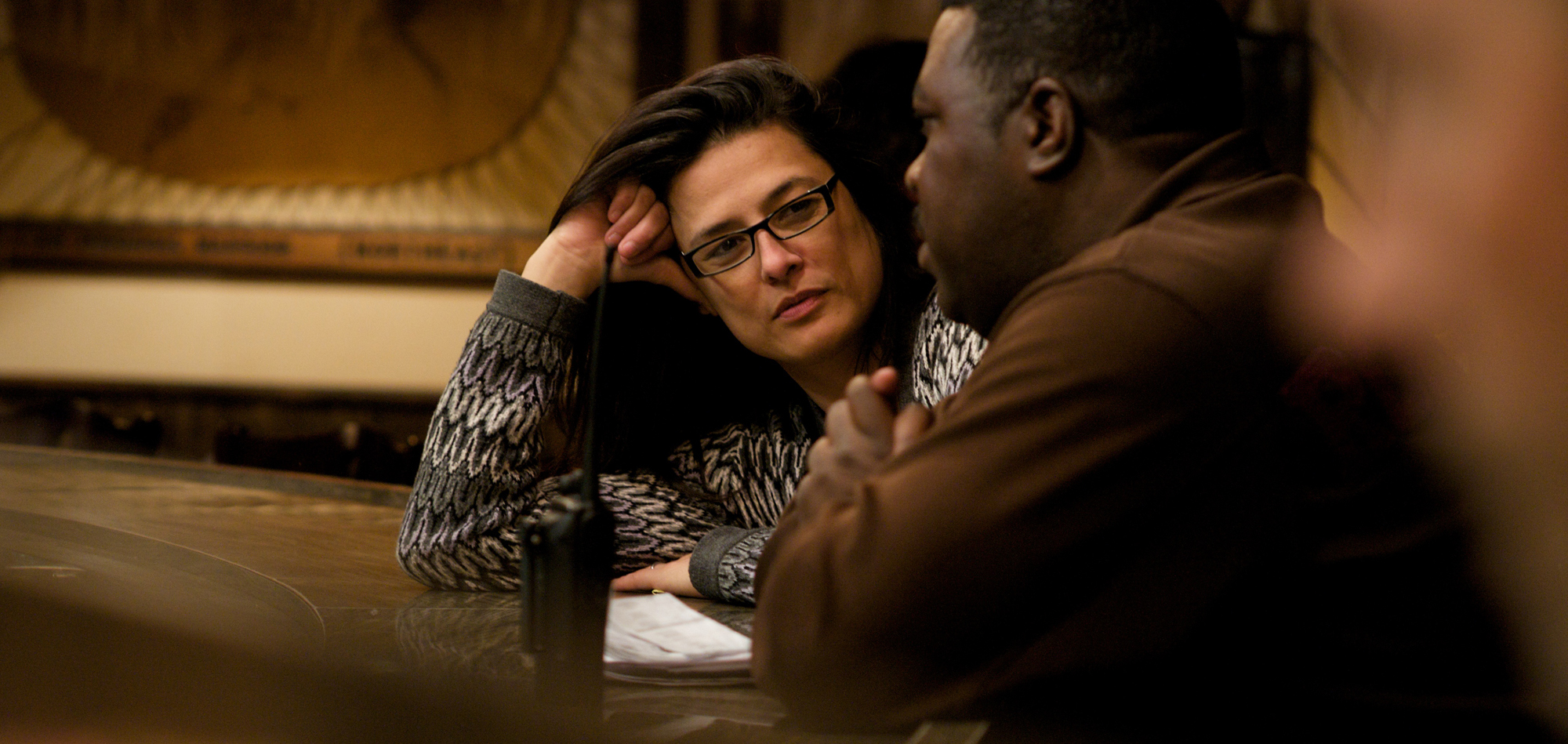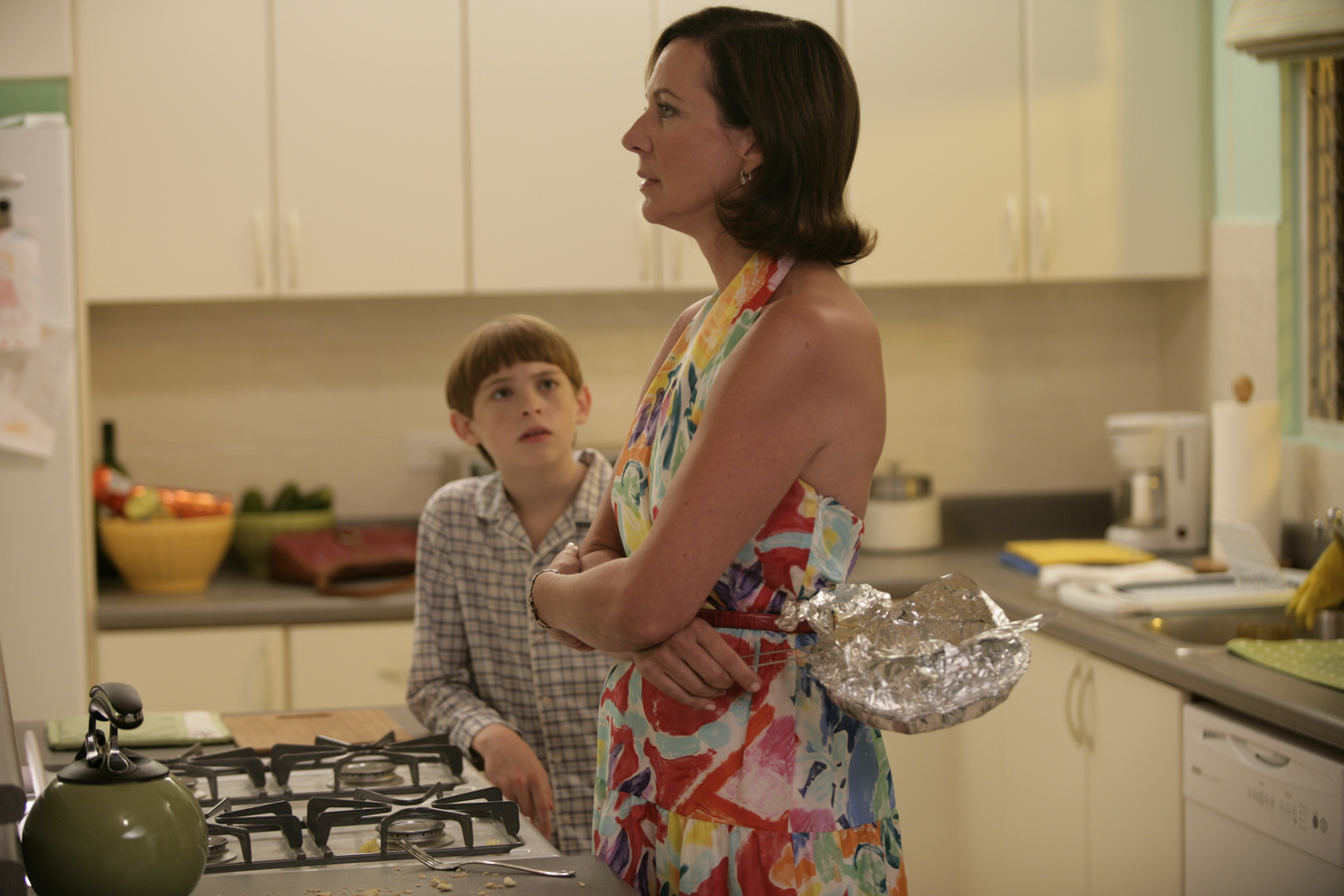Inside the Producer’s Art
Filmmaker and writer Marsha Trainer profiles producer Christine Walker (HOWL, LIFE DURING WARTIME), co-founder of the Mpls-based film production company WercWerkWorks, to get to the heart of the question, "What does a film producer actually do?"


A QUICK SEARCH ON THE INTERNET REVEALS COUNTLESS LISTS of the world’s great directors, screenwriters and actors, describing at length their contributions to the art of film. However, it is rare to find a similar catalog of great film producers, and nearly impossible to find a discussion about their creative input. Producers are the ones who receive the Best Picture statuette at the Oscars, and yet most viewers wonder who they are and what they do (Slate article, 2009). Even within the film world, the definition of a producer has been a difficult thing to pin down. The question, “What does a producer do?” is even asked at film festival panels, like this one at last year’s Los Angeles Film Festival; recently, a definition of the role was made clearer by the Producers Guild’s “Producers Code of Credits.”
While these steps towards clarifying the murky definition of a producer are helpful, they point toward yet another question: What creative contributions can and does a film producer make?
This is precisely the question I posed to Minnesota film producer Christine Walker about her own relationship to art and film. Walker’s thirteen-year producing career encompasses a succession of undeniably artistic film projects. From Native American stories like Older Than America to the Charles Bukowski adaptation Factotum, to the film version of the graphic novel American Splendor, Walker has undertaken work with an array of motion pictures that are both smart and diverse. Her resume also shows a broad commitment to independent and provocative filmmaking, notably with her work as cofounder of the Minneapolis-based production company WercWerkWorks with Elizabeth Redleaf. Under the Werks banner, Walker produced Todd Solondz’s Life During Wartime and Howl, a film based on the famous Beat poem, which opens in Minnesota theaters this month, plus several other titles.
When I spoke with Walker recently and asked her to detail a film producer’s creative role in film, she explained that the line between logistics and creativity couldn’t be so easily drawn. “Filmmaking is a process,” she says, and from her perspective, creativity is in all aspects of the journey.
________________________________________________________
How does being a film producer tap into the creative or artistic aspects of the medium?
My relationship to film as an artistic medium has everything to do with the fact that it’s a collaborative art form. My role is to identify the creative potential of a project and then marshal the intelligence, team, and resources to make the best possible film. Sometimes that means I provide in-depth story notes to the writer. Other times, it means I hire the right cast member. Or, it can mean I find the money to rent cranes. One of my favorite scenes in Factotum is when Hank Chinaski takes a forbidden break from his job sorting brake pads to smoke a cigarette. The shot starts on him leaning outside a window then pulls back to reveal his increasingly insignificant form, surrounded by an overwhelming wall of brick. Prior to shooting the scene, our budget was so tight we did not have the money to rent a crane. Yet, when director Bent Hamer described the shot, he helped me understand that the film would be lesser without it. Ultimately, I found a way to get the crane, and it remains one of the most satisfying and lyrical scenes in the film.
In addition to procuring cranes, what are the creative tasks you take on while making a film?
For me, the process of imagining a project from start to finish, anticipating the challenges, and coming up with solutions is the most creative and rewarding aspect of the job. Early on, I learned that, while a film starts out in the script stage, it is recreated and takes on new forms in several stages of the process. I was motivated to learn how to budget and schedule because both have a direct impact on the creative outcome of the film. Essentially, the budget defines the creative priorities and maps out how to accomplish those goals within certain financial parameters. If that process isn’t managed, you can end up with a film that is far different from what was originally imagined. The same goes for scheduling: If you don’t manage your time, you risk pressuring directors and actors into poor decisions or losing shots, and perhaps entire scenes. We fought the clock daily on Life During Wartime. In order to complete the movie, we had to move the production back to Minnesota and finish shooting here. It was a bold and risky solution that allowed the film to be completed.
What is your relationship to the director’s creative vision?
Every director is different. My job is to figure out how best to support them in their vision and process. Some have a clear vision of what they want but need support in figuring out how to get there. Others are more confident in the hands-on filmmaking process, but less communicative about a vision for the film per se. In that case, I might work with the director to find a way to articulate a vision for the film that can serve to guide other members of the team. In any event, I’ve learned that style has no relationship to talent. Therefore, part of what makes producing so satisfying is figuring out these different directorial styles and learning to adapt.
Directors may be different, but storytelling seems to be a constant. What is your relationship to the story when you take on a producing job?
I agree, to the extent that technique and digital and special effects cannot take the place of a good story. However, I often wonder what people mean when they talk about ‘storytelling’ — it takes many forms and varies amongst cultures. Beyond that, there are a lot of people out there who are deemed master storytellers, but whose stories don’t interest me. I’d much prefer a messier film with less of a ‘story’ that pushes boundaries and shows structural risk-taking. Aside from that, my relationship to the story itself is strictly personal. I remember reading American Splendor by Bob Pulcini and Shari Springer Berman. It was not only the best script I had ever read, but also the actual process of reading the script was special. It had all the things that make for great cinema — creativity, risk, inspiration, education, and emotional resonance. Despite the filmmaking challenges the script presented, I knew right away I had to be involved.
You are leaving WercWerkWorks and going back to being a freelance producer. What kinds of projects do you plan to do?
I will continue to produce the same kinds of films we do at WWW, but I will devote more attention to developing material. One project I am excited about is Stay Then Go, a film by Shelli Ainsworth. She and I have been developing it together for more than 10 years. Recently, the script received a McKnight Screenwriter’s Award and was invited to IFP NY’s prestigious No Borders program, which pairs financing with selected projects. I also have some Hawaiian projects that I am working on. At this point in my career, the only thing that scares me is that I’ll throw in the towel before I make these projects happen — I figure now is the best time to face my demons.
Which creative producers inspire you?
Ted Hope (American Splendor, Happiness, The Ice Storm)
Christine Vachon (I’m not There, Girls Don’t Cry, Far From Heaven)
John Kilik (The Diving Bell and the Butterfly, Pollock)
Mary Jane Skalski (The Visitor, The Station Agent)
Lydia Pilcher (Monsoon Wedding, Jesus’ Son)
If you look at the contributions these producers have made, and the films they’ve chosen to produce, they are all visionaries in their own right. For each, their body of work represents a genuine commitment to quality and distinctive filmmaking.
Finally, what’s your reaction to the PGA’s (Producer’s Guild of America) efforts to codify the definition of a producer?
I support the PGA’s efforts to standardize the definition of a producer, along with the other various types of producers. It’s truly bizarre that when you say you produced a film, most people have no concept of what that means. It’s even more absurd that a person can be called a producer on a film and have had no real meaningful involvement. Imagine awarding a co-CEO position to someone who only appeared in the company’s ads. It would be unthinkable. Now, as a result of the PGA’s efforts, awarding ‘vanity’ credits is heavily scrutinized and the legitimacy of the producer credit is elevated.
________________________________________________________
Related projects and events:
Christine Walker is currently on location in Utah, executive producing the WercWerkWorks production of Darling Companion, a Lawrence Kasdan film.
Howl premiered in Minnesota on September 30 at the Walker Art Center, and the film opens at the Landmark Theaters in the Twin Cities later this week, on October 15.
________________________________________________________
About the author: Marsha Trainer created and curates a blog, Skyway of Love, that highlights public art in and around downtown Minneapolis. When not obsessing about the skyway system or food blogging for City Pages, she produces narrative and documentary films, including the award-winning short, Ana’s Playground.